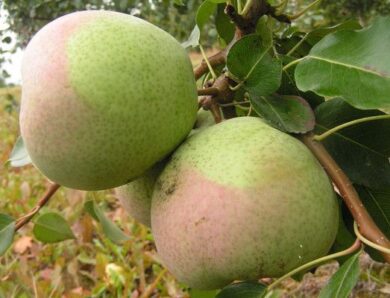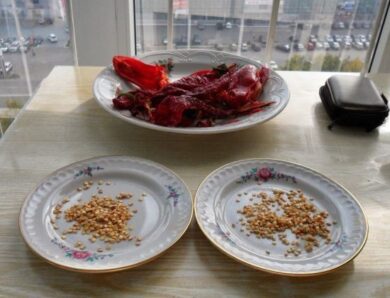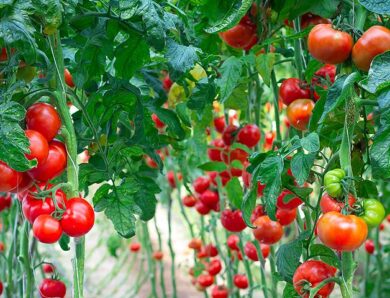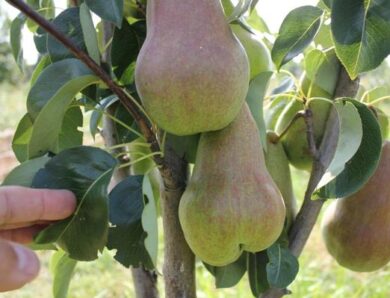The best varieties of radish seeds for open ground: early, large-fruited, medium maturity
Spring is the time to start work in the garden and sow vegetable crops. Very often gardeners grow radishes, as it is a useful and tasty vegetable. Our article will tell about it, what are the best varieties of radishes for open ground should be chosen, to gather from the beds a bountiful harvest.
Varieties for a country bed
Radish is a very popular annual crop for gardeners, which is now actively grown in many countries in Europe and the rest of the world. It is one of the subspecies of radish. The value of the plant lies in the formation of succulent cylindrical or rounded roots. It is a kind of root and gave the name to the culture, because radix translates as "root".

To date, radishes are represented by a variety of species, which differ in the following parameters:
- maturity;
- agricultural machinery;
- description of root crops (form, color, taste);
- growth region.
This culture is found not only in country beds, but also in the wild. However, in nature, wild plants almost do not form a root crop, and if it forms, then it has a whitish color. At the same time varieties, are intended for a country bed, compete with each other on the size of roots and their color. Their color of vegetables can be red or pink, and purple.
In our country, gardeners appreciate radishes for the following properties:
- frost resistance;
- speed;
- excellent sharp taste, which is due to the presence of mustard oil in the pulp of vegetables;
- the ability to harvest for a long time (when sowing seeds of different varieties every week).
To get a great harvest, you need to choose healthy radish seeds and its best varieties for growing in open ground. The most profitable in terms of yield and cultivation species will be discussed below.
Heat
Early ripening variety. Achieving root maturity of technical maturity is observed in the heat already on 18-20 the day after planting the seed in the ground.
The variety forms vegetables with the following characteristics:
- shape - round;
- the surface of the skin is smooth;
- the color of the outer skin is red. A slight hint of crimson is possible;
- the flesh is juicy and dense. It is white. The formation of voids is not typical;
- the weight of one radish is about 30 p.
Heat roots have a pleasant taste. They are not characterized by bitterness, however, there is a slight sharpness. Due to this, the variety has a high assessment of taste. Therefore, this radish is suitable for slicing in salads, as well as eating fresh.
The yield of the variety is not bad. WITH 1 sq. m of plantings can be obtained up to 2,8 kg of vegetables.
This variety can be planted in film shelters, as well as in ordinary beds. The heat was specially derived for hot and warm regions. Therefore, it tolerates high temperatures, but less resistant to frost. Therefore, it is often grown under film shelters. Plants have a strong immunity to flowering and the most common diseases of this culture.
Double f1
There is also a precocious variety. Here the technical ripeness of vegetables comes about 23 day after planting. The hybrid can be planted in the spring, and for the winter.
Dabel f1 is formed quite a large root compared to all other varieties. The average diameter of one radish is about 4,5 cm. The weight of the vegetable reaches 35 p. The aerial part of plants is insignificant.
The following characteristics are characteristic of root crops of this variety:
- red skin color;
- the flesh is white. It is characterized by a homogeneous density. It does not form voids in that case, if the radish has outgrown;
- the taste of radish has a medium sharpness;
- vegetables have excellent marketable qualities;
- long storage period.
Harvesting is one-time. At insignificant processing on 1 sq. m can fit up to 400 plants. Yield depends on planting density, obtained per unit area. Radish is suitable for sale, and use for personal purposes. The variety can be grown in greenhouses or in ordinary beds.
When growing this hybrid you need to know, that it has excellent resistance to cold and shooting.
The advantages of Dabel f1 include:
- the socket is compact;
- frost resistance. The development of the underground part of plants continues even at low temperatures;
- rapid maturation;
- excellent appearance of the fruit;
- fertility;
- high performance.
Red Giant
He was bred in the Far East. Variety of medium maturity. From the moment of sowing the seeds to the formation of technically mature roots passes from 34 to 50 days. This variation in the maturity of vegetables is due to different climatic conditions of the region of cultivation. This must be taken into account when planting this variety in your garden beds.
Today, the Red Giant is actively grown not only in Japan, but also in the European part of Russia or the North Caucasus.
In the process of plant growth they form a large and expansive rosette. Formed roots have the following description:
- red saturated skin color. Pink furrows are visible on it;
- cylindrical, elongated shape of roots;
- white flesh. It does not lose its brightness and density for a long time;
- the taste of vegetables is sharp;
- the length of the radish has 13 cm;
- the weight of one root varies from 45 to 80 p.
The Red Giant is known for its excellent yields. WITH 1 sq. m. can be collected to 4,2 kg of tasty and high-quality radishes. When creating the right storage conditions (the storage must be refrigerated) harvest, for 4 months, able to maintain its qualities.
The variety is able to grow in open ground. It has good resistance to shooting.
Cherriet f1
Another early-maturing hybrid, which was bred by Dutch breeders. The Cheriet F1 crop can be harvested through 18 days after the appearance of the first seedlings in the beds. However, for this purpose it is necessary to carry out landing only in the presence of favorable weather conditions, and also to apply all necessary agrotechnical receptions at the moment of its carrying out.
The hybrid can be grown in warm regions in the open ground. When planted in a greenhouse, the crop can be harvested throughout the year.
The following properties are characteristic of root crops of this variety:
- large size. Average diameter of vegetables - 6 cm;
- radish shape round;
- skin color - dark red;
- vegetables have a flat surface;
- the flesh is dense and free of voids;
- great taste.
This hybrid is characterized by the formation of a low aboveground part. Plants are not prone to the formation of flower arrows.
Selesta f1
This variety is a hybrid, the roots of which reach their technical maturity through 23-25 days after sowing seeds. Celeste f1 differs from other varieties by the distinctive characteristics of its roots:
- radish has a slightly elliptical shape;
- the surface of vegetables is smooth;
- the skin is bright red;
- the flesh is dense and white. It is not characterized by lethargy and cracking;
- the taste of radish is pleasant with a slight sharpness;
- vegetables are great. The diameter of one radish is on average 5 div.
The hybrid is grown as in film constructions, and in open beds.
Autumn giant
Another early-ripening variety of radish is the Autumn giant variety. Here the ripe harvest can be collected approximately through 25-29 days, which will take place from the moment of planting.
The name of the variety fully reflects its main difference and advantage - very large white roots. The usual form of radish of this variety is ovoid. Due to its gigantic size, one vegetable weighs about 150 p. Its length is about 8 – 10 div. Outwardly, the roots of the Autumn Giant resemble a daikon (variety of radish).
Vegetable pulp, as well as the outer skin, has a white color. It is characterized by a bright taste, as well as a delicate texture. It is not recommended to leave ripe vegetables in the soil. In this case, they will start to be rude, as well as lose their taste characteristics.
Under the right storage conditions, the crop, without losing their marketability and taste, able to lie down to 5 months. At the same time, the pulp will lose only a little in its density.
Gold
In addition to white and red radishes, other subspecies can be planted in country beds, which are known for their unusual color of roots. Example, Zlata variety forms rounded vegetables with yellow skin. The flesh is crunchy and has a standard white color. It is characterized by a juicy texture.
This is an early ripening variety, technical maturity which comes on 20-22 days. Zlata is highly productive. With abundant watering the roots weigh about 20-24 p. The maximum weight of radishes of this variety - 60 p.
The advantages of the variety include:
- planting tolerates a lack of moisture;
- excellent marketable qualities;
- excellent taste of roots;
- long-term storage of the crop, during which there is no decrease in the basic characteristics of the pulp.
Zlata is suitable for planting in open ground.
Malaga
Malaga is an early variety of radish. It differs from other species, that the skin of the roots is purple. Characterized by friendly harvest education.
Radish has the following characteristics:
- vegetables have a flat surface;
- shape - round;
- the average mass varies within 16-20 G;
- the flesh is juicy and white. It is crunchy and has a thick consistency. Its taste is sharp.
Harvest, when creating optimal conditions, capable for a long time (close 1-1,5 month) stored without loss of quality and taste.
If during the growing season the weather was dry, then Malaga will form arrows. It can be planted from early spring until the first frosts.
Late-ripening varieties
In addition to early varieties of radishes, which have been described above, in country beds and greenhouses gardeners grow late varieties of this culture. In such species, the technical maturity of the roots occurs approximately through 36-45 days, that have passed since the planting of seed. As a result of the harvest from such beds can be harvested in the second half of summer or early autumn.
Due to the late ripening of the crop, such varieties are planted in open ground in late May. Sowing of seeds in the beginning of June is allowed. To get a good harvest, planting dates should be determined depending on the region of cultivation.
The following varieties are considered the best late-ripening grades of a radish.
Würzburg
It is sometimes referred to as the average rate of ripening of the species. Ripening radishes occurs during 25-35 days, that have passed since the sowing of seeds. The vegetables here are round and have a red skin. Their diameter is from 3,6 to 4,2 div. If the radish has outgrown, then its skin does not crack.
The flesh may be pink or white. It has excellent taste and is almost devoid of bitterness. The flesh is tender and juicy.
Such a radish weighs close 14-18 p. The yield of the variety depends on it, in which region the culture is grown. In the case of long-term storage, vegetables remain fresh and beautiful.
Plants have good immunity and effectively resist a variety of diseases.
Rampush
Quite popular late-ripening varieties of radishes, which is often grown by gardeners in our country, is Rampoush. The technical maturity of vegetables here comes through 35-45 days after planting.
Roots have a spindle-shaped and elongated shape. The skin together with the flesh is white. The taste of vegetables is pleasant, not very sharp. Bitterness is absent.
This type of radish is resistant to shooting. This variety is used for planting exclusively outside greenhouses.
Red giant
The most popular variety of radish, which is characterized by late maturation of the underground part of plants, is considered the Red Giant. It is actively grown in fields and gardens. The formation of the crop here occurs in the period with 35 on 50 day.
The vegetables are big. They have a red skin color, as well as juicy pulp. Root pulp contains a lot of vitamin C.. Their weight is 80-300 p. WITH 1 sq. m can be collected up to 4 kg of vegetables.
Root crops, when creating the right conditions, able to store well for several months. The crop can be stored in the refrigerator or cellar. However, in the process of storage, vegetables gradually lose their marketability. They become hollow and sluggish.
As we see, there are many wonderful varieties of radishes, which will feel great in the open field and give a rich tasty harvest. The difficulty of growing here lies only in that, that you need to choose several species from such a chic range.
Video "The best varieties of radishes"
In this video, the expert will talk about the best varieties of culture, as well as about, how to land properly.




